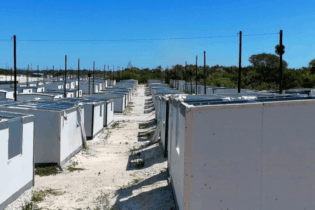In pursuit of more sustainable human settlements, lowest life cycle costs should be a fundamental objective. Enhancing thermal comfort and lowering heating and cooling energy through the use of clay brick walling envelopes is an important contributor towards this end.
A defining comparative study of ten show houses initiated in Perth by LandCorp Western Australia to assess the environmental compliance of different house types and construction methods being promoted in Australia, clearly reinforced the significance of passive solar design techniques incorporating the use of clay brick construction (for optimising the passive solar opportunity), as a practical, sensible, cost effective means for achieving optimal energy efficiency and lowest lifecycle costs. The one and only double skin clay brick show house as built by Jade Projects achieved an 8 Star Energy Rating in terms of the Building Energy Rating System (BERS). The other nine show houses of which seven comprised steel frame construction with different insulated lightweight walling components, achieved energy ratings of 5 and 6 stars. The passive solar designed clay brick house demonstrated that correct orientation to the path of the sun through both summer and winter, shading to reduce radiant heat from entering the house during the hottest period of the day, good window placement to use natural breezes to cross ventilate and cool internal spaces, and the correct use of thermal mass and insulation in the building envelope, is all that it takes to ensure optimal energy efficiency scenarios and mitigate the need for any artificial heating and cooling interventions. Australia happens to have similar climates to that experienced in our six major climatic zones, with Perth having a climate on a par with Cape Town. The Perth show house findings in favour of clay brick construction is mirrored in a host of other empirical, parametric or thermal modelling studies undertaken in both Australia and South Africa. The thermal value of clay brick in construction is rooted in the way the thermal mass of the brick handles heat in South Africa’s unique climate, where the challenge of walling materials is to moderate external temperature amplitudes to more bearable levels indoors, whilst also ensuring that the average indoor temperature remains at an acceptable level throughout the year. High thermal mass clay brick walls provide what is known as a ‘mass enhanced R –value’ that research finds consistently outperforms low-mass walls of comparable steady-stated R-value. The mass provides the walls with the necessary propensity to self regulate, the bricks functioning like thermal batteries, slowly absorbing, storing heat during the day over a 6 to 8 hour period, and then releasing that heat when it is needed most. This time lag, referenced as ‘thermal lag’, is what moderates internal temperature conditions for longer during the hottest periods of summer days.In winter the internal high mass brick walls that have slowly absorb radiant heat during the day release that stored heat to the cold evening air helping keep internal thermal conditions comfortable for longer. Should heaters be used the mass of the clay brick walls continues to function, absorbing and storing that heat that is then released to counter the inroads of the cold. While un-insulated double skin cavity clay brick house construction continues to set the benchmark for all that is good about house construction affording an energy efficient walling envelope, all modelling studies correlate showing how this same basic energy efficient walling envelope can be enhanced with insulation in the cavity to provide optimum solutions in terms of comfort, energy efficiency and cost.
Reinforcing this are the findings of the substantive thermal modelling undertaken as part of the Energetics full Life Cycle Assessment of the clay brick industry of Australia. The modelling was of two house types located in three climatic zones and four different orientations and compared clay brick cavity walling with and without insulation in the cavity to timber frame lightweight insulated weatherboard walling. The study found that in most cases the un-insulated clay brick walled house afforded lower operational energy usage to the insulated lightweight walled alternate. In the case of the Verdant house design, insulation with an R-value of 1.3 added to the cavity of the brick walls resulted in a 26% lower energy usage and that happened to translate into 26% lower total greenhouse gas emissions (embodied plus operational) for the clay brick house over a 50 year life cycle. While the full Life Cycle Assessment established the thermal comfort benefits and the low life cycle impacts clay brick construction provides, it also highlighted that a comprehensive approach to sustainability requires that we continue to build houses able to endure, with little maintenance and definitely no materials replacement, way beyond a 100 year lifecycle. Clay brick is the one man made walling material that has proven to be more than up to the task with the thermal efficiency benefits enduring way beyond the limited lifecycle of less durable alternate lightweight walling.






